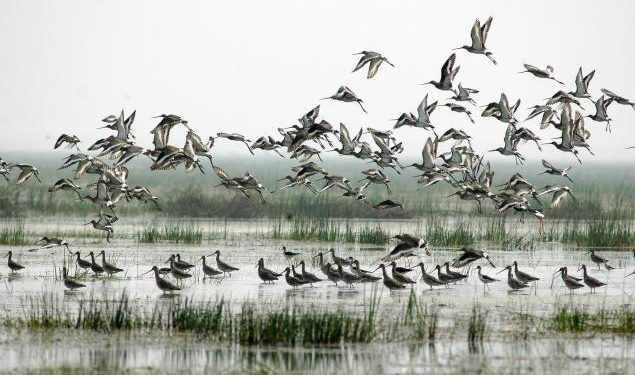Berhampur: Annual bird census in Chilika, the biggest brackish water lake in the country, is slated to be carried out January 4, a senior Forest official said.
Besides wildlife personnel, several experts of different organisations in and outside of the state will be engaged in the mammoth exercise, the official said.
On eve of the actual head count, a training programme of the enumerators will be held at the Wetland Training and Research Centre (WTRC) in Chandraput near Balugaon January 3, he said.
As many as 100 experts from different organisations will take part in the census work, said Divisional Forest Officer (DFO), Chilika Wildlife Division, Bikash Ranjan Das.
“We will form 20 groups for enumeration of the birds in the entire lake, spread over about 1100-sq km,” he said. Experts from organisations like Bombay Natural History Society (BNHS), Wild Odisha, National Board of Wildlife, Regional Museum and Natural History, Chilika development Authority (CDA) and different state universities, members of the bird protection committees would participate in the bird count, the DFO said.
While a blanket restriction has been imposed on entry of visitors to the Nalabana bird sanctuary area in the lake, tour operators have been asked not to take tourists to other parts of the lake, particularly Mangalajodi January 4-on the day of enumeration, the DFO said.
Visit of tourists might affect smooth conduct of the census. The restriction on entry of visitors will be lifted after the counting of birds in the lake, he clarified.
In the last winter, as many as 8,93,390 birds of 147 different species were counted in the entire lake. Highest number of 3,20,826 birds were sighted in 15.59-sq km Nalabana bird sanctuary area, sources said.
“Since the cold situation this time is more severe than the previous winter, we think more number of migratory birds might have visited the lake to take shelter in the winter,” said an ornithologist here.
The winged guests from far off places including Caspian Sea, Lake Baikal, remote parts of Russia, central and South East Asia, Ladakh and Himalayas throng the lake every winter for feeding and roosting. They start their homeward journey with the onset of summer.
PTI






































